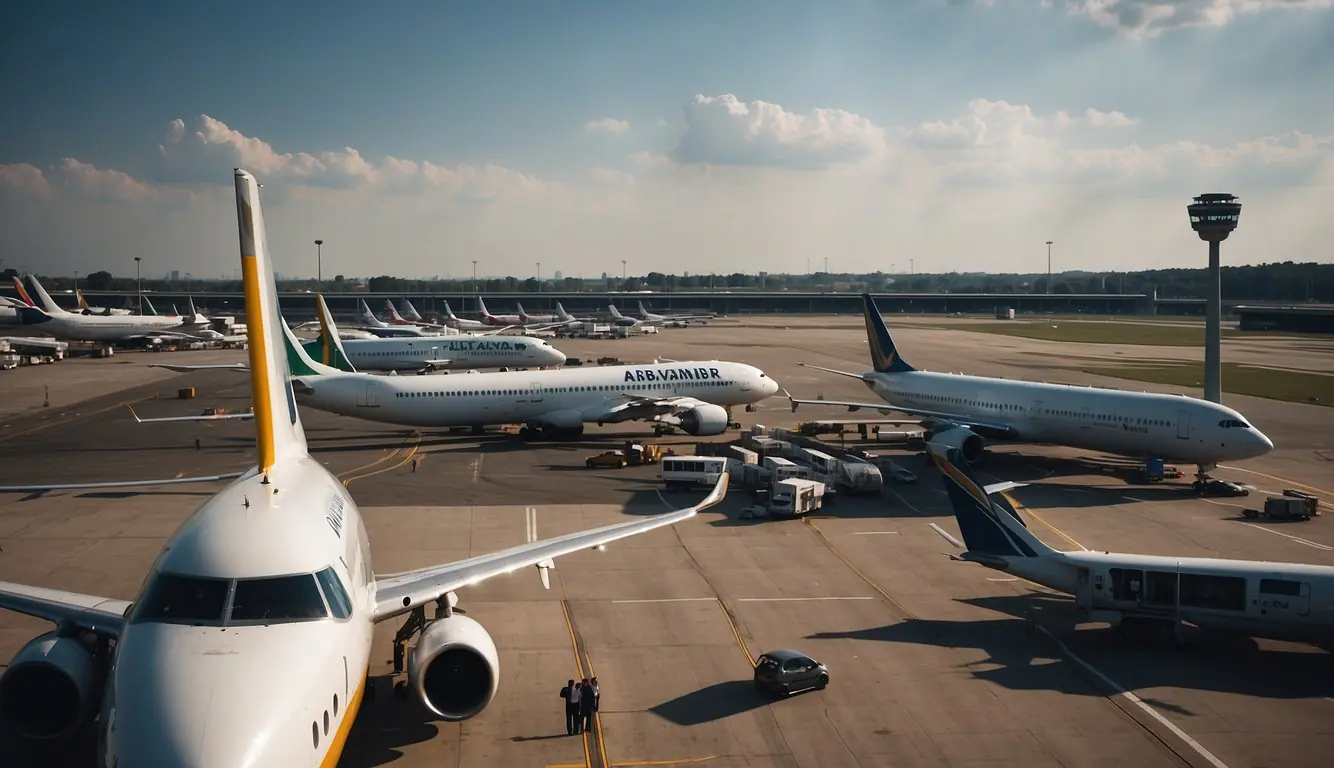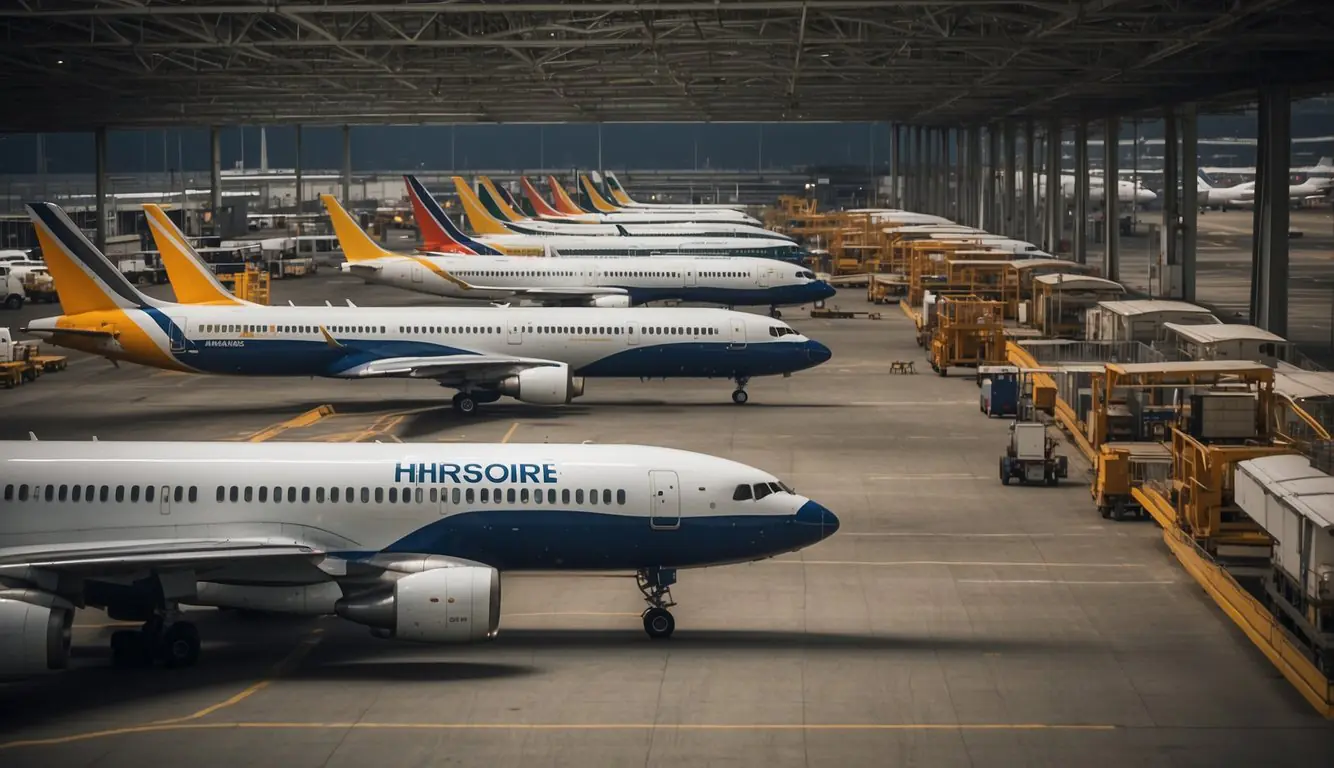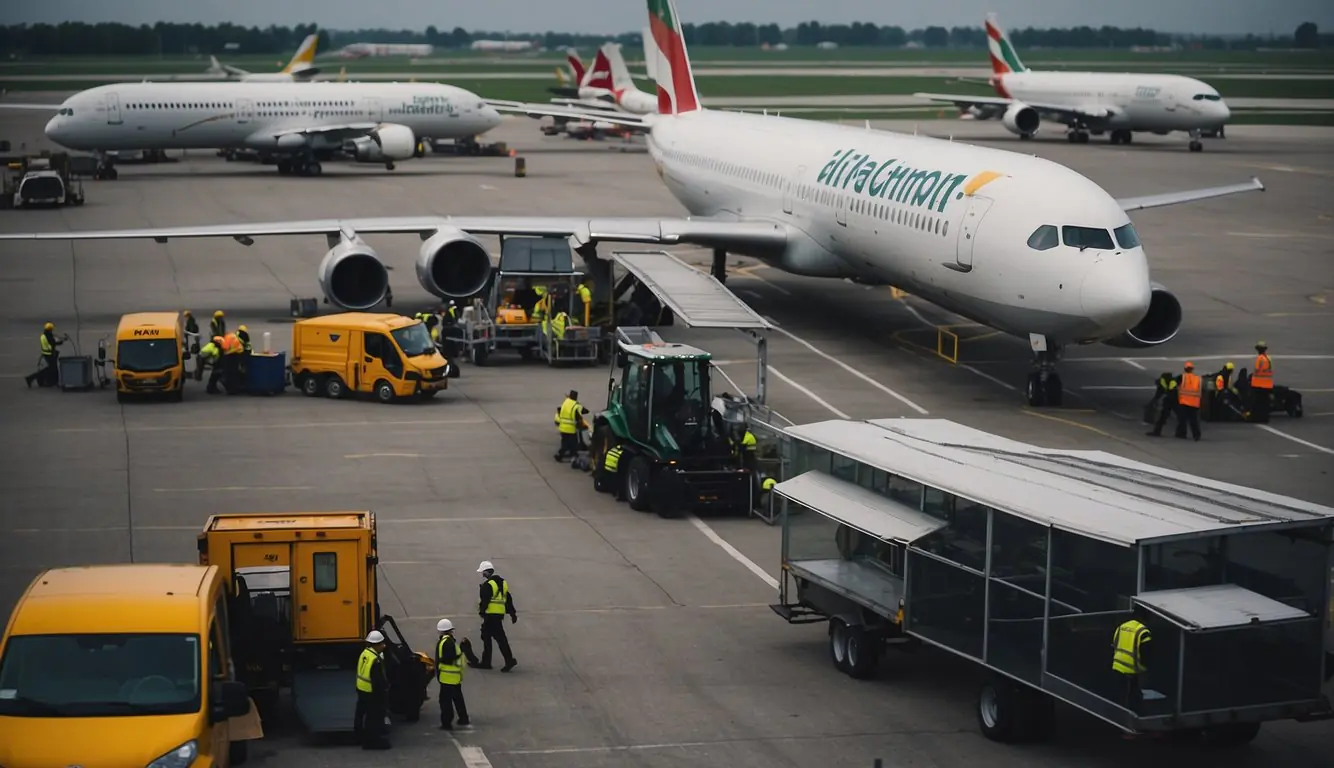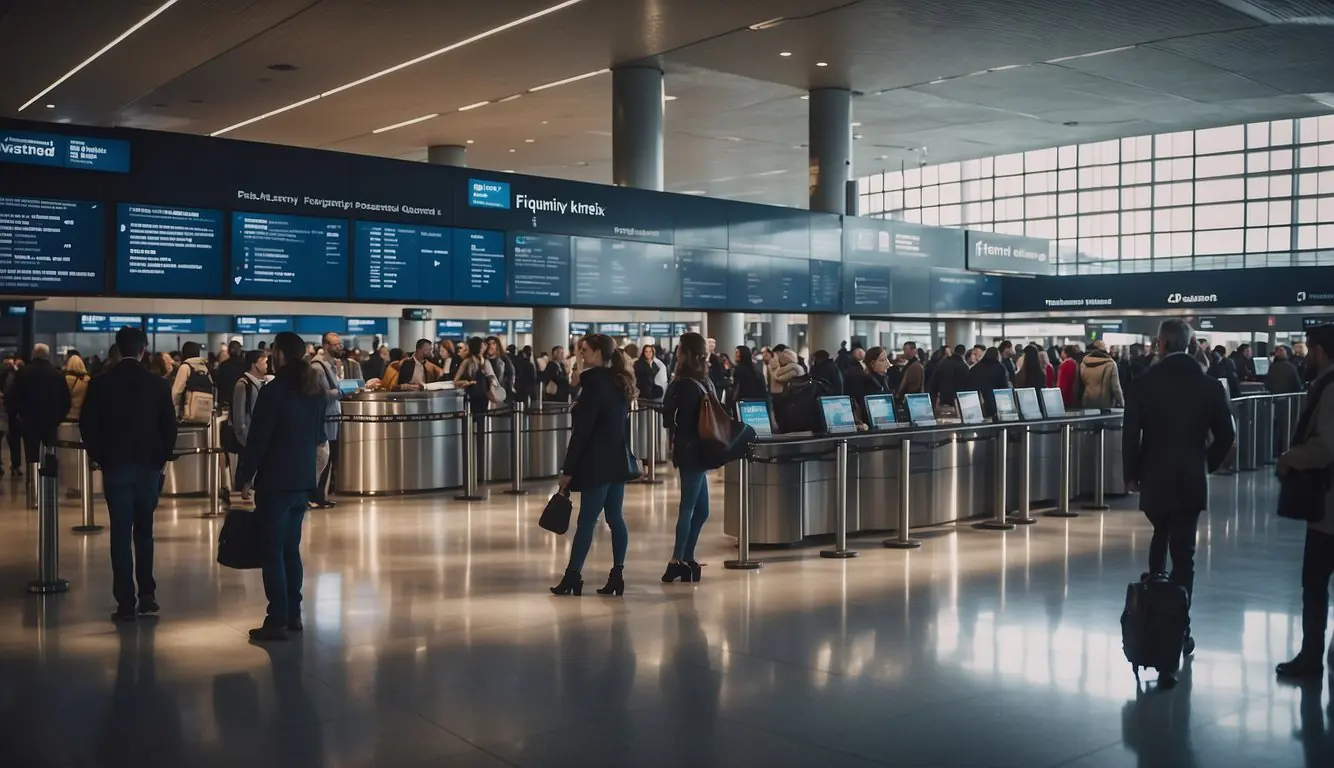Milan is a major travel hub in Italy, and the city is served by three main airports: Malpensa, Linate, and Bergamo. Each airport offers various facilities and transport options to make your journey easier. Whether you’re flying in for business or pleasure, choosing the right airport can save you time and stress.

Malpensa Airport, located 49 kilometers northwest of Milan, is the largest and busiest of the three. It’s ideal for intercontinental flights and offers extensive amenities like VIP lounges and shopping. Linate Airport is closer to the city center, making it a convenient option for short domestic or European flights. Bergamo Airport, although a bit further away, often serves budget airlines and can be an economical choice.
For travelers, understanding how to navigate these airports is key. There are various options like trains, buses, and taxis to get you from the airport to Milan city center or other destinations. Check out the comprehensive guide on how to get to Milan’s city center from each airport to make your trip smoother.
Airport in Milan
Key Takeaways
- Milan has three main airports: Malpensa, Linate, and Bergamo.
- Malpensa handles most intercontinental flights and offers many amenities.
- Linate and Bergamo are closer to the city and serve mainly European and budget flights.
History of Milan Airports
Milan has a rich aviation history, evolving from early 20th-century beginnings to modern international hubs. Key developments for Malpensa, Linate, and Bergamo airports reflect this progress.
Early Developments
Milan Malpensa Airport first opened in 1909 as a site for testing aircraft. Founded by Giovanni Agusta and Gianni Caproni, it played a crucial role during World War I as a flying school.
Linate Airport was established later, in 1937. It was named after Enrico Forlanini, a renowned aviation pioneer. Initially used for military purposes, it gradually transitioned to civilian use.
Bergamo Airport, or Orio al Serio International Airport, began operations in the 1970s. Located near Bergamo, it was developed to support regional air traffic and has since become a key player in low-cost air travel.
Expansion and Modernization
After World War II, Malpensa Airport underwent significant expansion. The airport was rebuilt to replace the damage from wartime bombings and became operational again in the mid-1940s. In recent years, it continued to grow, serving millions of passengers annually.
Linate Airport also saw notable developments post-World War II. Modern facilities and runways were added, making it a critical airport for European travel.
Bergamo Airport expanded to accommodate increasing passenger numbers, particularly for budget airlines like Ryanair. It now serves as one of Ryanair’s largest bases. This airport is integral to Milan’s air traffic network and continues to adapt to market demands.
In summary, each of Milan’s airports, including Malpensa, Linate, and Bergamo, has evolved significantly over the decades, each with unique developments and modernizations that have enhanced their capacity and services.
Navigating Milan Airports
Milan features three key airports: Malpensa, Linate, and Orio al Serio. Understanding the layout and available transport options can make travel smoother and more efficient.
Terminals and Facilities
Malpensa Airport (MXP) is the largest, with Terminal 1 being more modern and Terminal 2 handling low-cost airlines. These terminals are connected by a free shuttle bus running every 7-15 minutes. Linate Airport (LIN), situated within Milan, deals largely with domestic and short-haul international flights. Orio al Serio Airport, another key airport, is favored by low-cost carriers like Ryanair.
Each airport offers a range of facilities including shopping, dining, and lounge areas. Malpensa, for instance, has numerous boutiques, duty-free shops, and restaurants that cater to different tastes. Each terminal provides ample seating, free Wi-Fi, and essential services such as ATMs, currency exchange, and information desks.
Transport and Connectivity
Transport options from Milan airports are plentiful. Malpensa Airport connects to the city via the Malpensa Express train, which runs to Milano Centrale and Milan Cadorna stations. The train ride lasts less than an hour and costs around €14. Buses and taxis are also available, with Malpensa Shuttle offering regular bus services to the city center.
Linate Airport is just 7 km from central Milan, making taxis and buses very convenient. Public buses link directly to key subway stations, while taxis provide a quick route to downtown hotels and destinations.
Orio al Serio Airport also has strong connections to Milan through several bus services. This airport mainly serves low-budget travelers and is about 50 km from Milan, with bus fares typically affordable and services running frequently.
Understanding these options ensures we can travel seamlessly between the airports and Milan’s bustling city center.
Airlines and Destinations

Our focus here is on the major carriers operating at Milan Malpensa Airport and the popular routes they cover. This will help you understand the key options available for both domestic and international travel.
Major Carriers
Milan Malpensa Airport hosts several major airlines that facilitate both domestic and international travel. Among the top carriers, Alitalia serves many national routes while EasyJet and Ryanair provide low-cost options for various European destinations.
Lufthansa and Air France offer frequent flights to major European hubs like Munich and Paris. For longer international journeys, airlines like Emirates, Delta, and American Airlines ensure connectivity to the US and beyond. Air Canada and Air China also provide essential links to Toronto and Beijing respectively, expanding the airport’s global reach.
The presence of these airlines ensures a wide range of destinations, making it convenient for travelers to plan their journeys with minimal hassle. For full details on the airlines operating at the airport, you can explore the list of airlines.
Popular Routes
Milan Malpensa is well-connected to numerous popular destinations. Domestically, it frequently serves cities like Rome, Catania, and Palermo. For international routes, Barcelona stands out as a major destination with a high frequency of weekly flights.
Other key European cities that are easily accessible include Madrid, Munich, and London. Routes to JFK in New York, managed by carriers like Delta and United, are also popular among travelers.
Flights to Asia and other continents are covered by carriers such as Emirates for Dubai and Air India for various Indian destinations. For a comprehensive view of the flights and destinations from Milan Malpensa, you may check the available routes and destinations.
By considering these major carriers and popular routes, we can ensure a smooth and well-informed travel experience.
Travel Tips for Milan Visitors

Exploring Milan is a delight, with efficient public transportation and iconic attractions. From choosing the right accommodation to navigating local transport, we’ve got you covered.
Accommodation and Local Transport
When visiting Milan, it’s wise to stay near the city center. This area puts you close to the Duomo and major shopping spots. Hotels around Centrale Station and Cadorna Station offer great connectivity.
Public transport in Milan is reliable and affordable. The metro system connects most tourist points, while buses and trams are convenient for short distances. Avoid renting a car as parking can be a hassle. For airport transfers, the Malpensa Bus Express or trains from Malpensa Airport and Linate Airport offer smooth rides to central stations.
Taxis and ride-sharing apps are readily available but can be pricey. An airport shuttle can save you some euros.
Sightseeing and Attractions
Milan is full of must-see attractions. Start with the iconic Duomo, a stunning cathedral at the heart of the city centre. Nearby, the Galleria Vittorio Emanuele II offers luxury shopping and dining.
For art lovers, Leonardo da Vinci’s ‘The Last Supper’ at Santa Maria delle Grazie is a must. Remember to book tickets in advance. Parks like Sempione near Castello Sforzesco offer beautiful green spaces.
Consider a day trip to Lake Como for breathtaking views. Nearby regions like Piedmont and Lombardy are also worth exploring. Use the train for these trips; they are efficient and scenic, adding to the Northern Italy experience.
Airport Operations and Statistics

Milan is served by multiple airports, with Malpensa Airport being the largest and busiest. Understanding passenger flow, peak times, challenges, and opportunities is crucial for efficient operations.
Passenger Flow and Peak Times
Malpensa Airport handles millions of passengers yearly. In 2023, 26,076,589 passengers flew in or out, marking a significant increase from 2022. Monthly, around 1.7 million passengers pass through, with January 2024 seeing a 9.52% increase from the previous year.
Peak times include summer months and major holidays, where the passenger numbers rise considerably. Weekends and early mornings are particularly busy. Efficient management during these times ensures smooth operations and a positive passenger experience.
Challenges and Opportunities
Managing a large airport like Malpensa comes with its challenges. Seasonal variability in passenger numbers can strain resources during peak times. Operational challenges include maintaining security, managing delays, and handling baggage efficiently.
Opportunities for Malpensa Airport include expanding routes and enhancing connections across Europe and beyond. Investing in technology and infrastructure can improve efficiency and passenger satisfaction. The pandemic highlighted the need for flexibility and resilience in operations, presenting an opportunity to innovate and adapt for future demands.
Conclusion
When considering air travel to Milan, there are three main airports to choose from: Malpensa, Linate, and Bergamo.
Malpensa Airport is the largest and busiest airport in Milan. It handles most of the long-haul international flights and serves as a key hub in northern Italy. It’s located about 50 kilometers (32 miles) northwest of Milan.
On the other hand, Linate Airport is much closer to the city center, just 8 kilometers away. Although smaller, it primarily handles domestic flights and some short-haul international flights. Its convenient location makes it a popular choice for those looking for quick access to downtown Milan.
Bergamo Airport, officially known as Bergamo Orio al Serio, is 45 kilometers (28 miles) from Milan. It is a major hub for low-cost airlines like Ryanair. While farther from the city, it offers a budget-friendly option for travelers.
For transportation, Malpensa Airport is well connected with the city through trains, buses, and taxis. Linate and Bergamo also provide various transport options, but the proximity of Linate to the city center makes it particularly convenient.
In conclusion, each airport offers unique advantages. Travelers should consider factors such as proximity to Milan, type of flights, and transportation options when choosing an airport for their travel needs. For more detailed differences between the airports, check this guide.
Frequently Asked Questions

Navigating Milan’s airports can be straightforward with the right information. Below, we address some of the most common questions travelers may have.
What is the main international airport in Milan?
Milan Malpensa Airport (MXP) is the primary international airport serving the city. It handles the majority of international flights and is one of Italy’s busiest airports.
How far are the Milan airports from the city center?
Malpensa Airport is approximately 50 kilometers from the city center of Milan. The other major airport, Linate Airport, is much closer, just about 7 kilometers from downtown.
Can you provide the International Air Transport Association (IATA) code for Milan’s primary airport?
The IATA code for Milan Malpensa Airport is MXP.
Which is preferable for travel to Milan, Malpensa or Bergamo airport?
Choosing Malpensa or Bergamo depends on your needs. Malpensa is ideal for international flights with extensive services and facilities. Bergamo Airport, about 45 kilometers from the city center, is mainly used by budget airlines and may offer cheaper flights.
What are the departure procedures at Milan’s airports?
For international flights from Malpensa Airport, passengers should arrive at least three hours prior. Expect passport control, security checks, and free shuttle buses connecting the airport’s two terminals.
Are there multiple major airports serving Milan?
Yes, Milan is served by three major airports: Malpensa (MXP), Linate (LIN), and Bergamo (BGY). Each airport has its own advantages, depending on your destination and airline choice.
